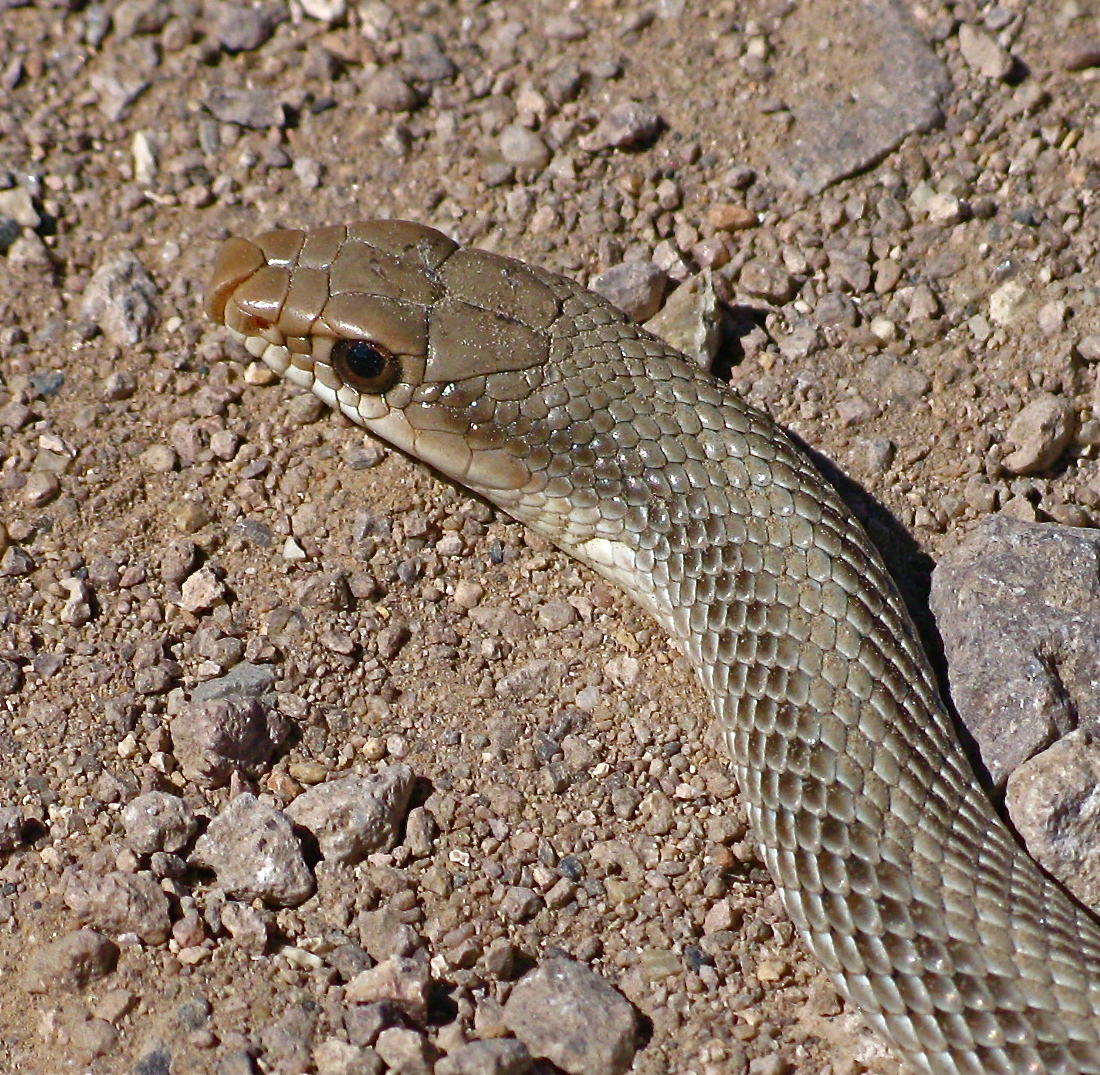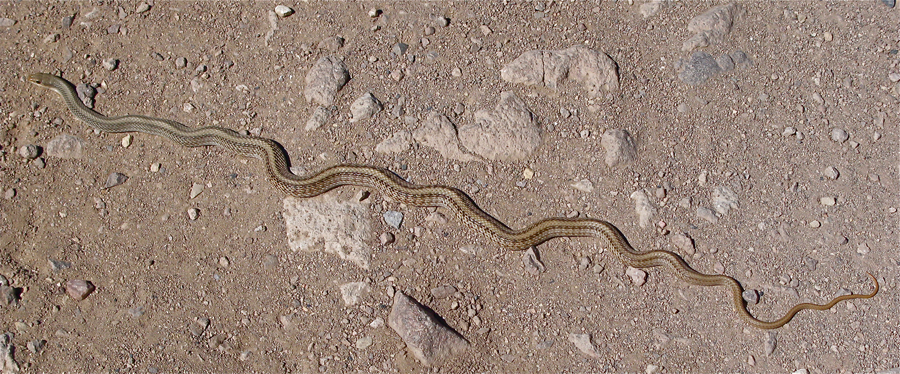Mohave patch-nosed snake…
…was a “life snake” for us, meaning we’d never seen one before we stopped to photo this graceful specimen crossing the road on the way to Titus Canyon on the east side of Death Valley.
we stopped to photo this graceful specimen crossing the road on the way to Titus Canyon on the east side of Death Valley.
The Mohave patch-nosed snake (Salvadora hexalepis mojavensis) is a diurnal generalist, with good eyesight and quick reflexes; this one was sunning itself on the rocky dirt road on a east-facing hill. We kept our distance, but moved closer after we’d photo’d it, so it moved off the road to safety. (Photos A.Shock)
Be sure to click on the close-up to enlarge it, so you can see the big rostral scale on the nose-tip of this burrowing, non-venomous snake. There’s even a little bit of grit still sprinkling its broad head-plates.

How cool is that? I have never seen one of those guys.
I mailed your beadwork today, you can compare it with the quality of the underbelly of the Mohave Patch-Nosed.
he’s such a long snake!
I see gopher snakes about once a spring; but this year many have been casualties on the rural back roads. Always makes my heart dip a bit to see this. I’m always wishing for a resident gopher snake to eat my voles.
Barn owl babies are now out of the nest box. Only one of the three is still begging for food. Now all are flying out to hunt. I miss the nightly aeiral show but am glad they are out somewhere doing rodent population control. One night as kitty and I were sitting on the garden shed porch watching from front row seats, the smallest baby was perched halfway up a tall euc with a parent. Kitty strolled out among the raised veggie beds, and the baby gave a half-hearted feint of a pass, feet down in a wobbly flight path, before deciding she might be a bit too large to mess with. Baby flew on by to perch in the top of a young oak, balancing on the soft new growth by fanning wings out to embrace the leafy canopy for balance. Kitty stays in at dark-thirty so she won’t “meet” any great horned owls.
Do you know anything about this specific species of snake? i’m doing a report, and none of the websites that i’m searching can give the correct information. i need to know haw many there are (on average), what is causing them to die off ( because they’re an endagered species), and how we can save them. If anyone knows any of these answers, i’ll be happy if you share them with me. the project’s due 5/24/2011.
Amy — I don’t know much more about this species than I wrote here. Not much is known about these guys. But try this website:
http://www.californiaherps.com/snakes/pages/s.h.mojavensis.html
It has a lot of info on the snakes and other reptiles of California. There are references at the bottom of the page of each species account.